Winter is upon us. Each adapt in their own manner for better or worse. …
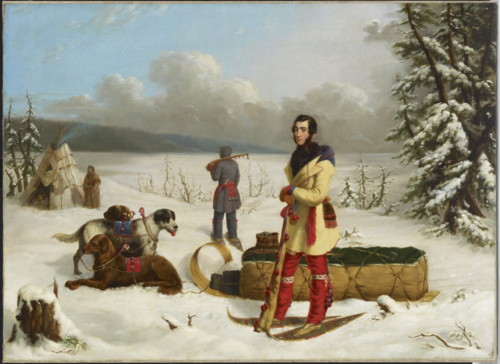
Read More:http://artgalleryofontario.tumblr.com/post/10356353095/scene-in-the-northwest-portrait-c-1845-1846---Scene in the Northwest - Portrait, c. 1845 - 1846 Paul Kane (Canadian) Painting, oil on canvas, 55.5 x 76 cm The Thomson Collection © Art Gallery of Ontario---
from Jonathan Jones: Bruegel’s paintings are not just prophecies. They are recipes of adaptation, illustrating new ways to live with the cold: how to inhabit it, even enjoy it. Ice and snow turn the world upside-down. In Bruegel’s paintings, the very chill that threatens life provokes vitality. People don’t just shiver in the snow. In his Census at Bethlehem, while adults huddle miserably, children skate and sledge on the ice, as they do in Hunters.
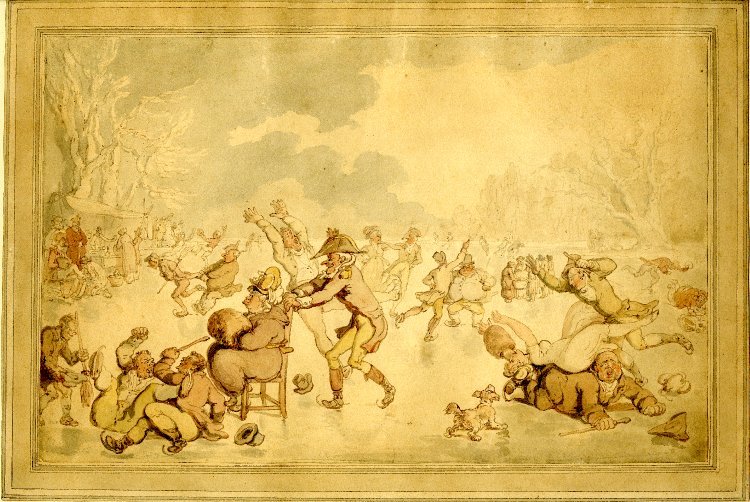
Thomas Rowlandson. Read More:http://www.britishmuseum.org/research/search_the_collection_database/search_object_image.aspx
Dutch artists took up Bruegel’s new snow scene genre as winters deepened and hardened and the frosts that seemed novel in 1565 became routine (though still magical). In making everything look new and alien – stopping school and work, severing the chains of rural habit – snow created a wonderland that is celebrated, for example, in the paintings of Hendrick Avercamp, where entire Dutch towns are shown out on the ice while old people sit watching, wrapped up warm.

Hendrick Avercamp. Read More:http://www.designlessbetter.com/blogless/posts/being-good-the-elixir-of-corporate-youth
In Britain, the 17th-century English diarist John Evelyn recorded that when the Thames froze over, from December 1683 to February 1684, people treated it as a “carnival of winter”. A carnival was a mad collective escape from drudgery, and in Abraham Hondius’s painting, A Frost on the Thames, you can see what Evelyn means. Long-haired dandies glide across the solid river, visiting booths and tents, while cannons fire to salute a royal visit and children play ball games.
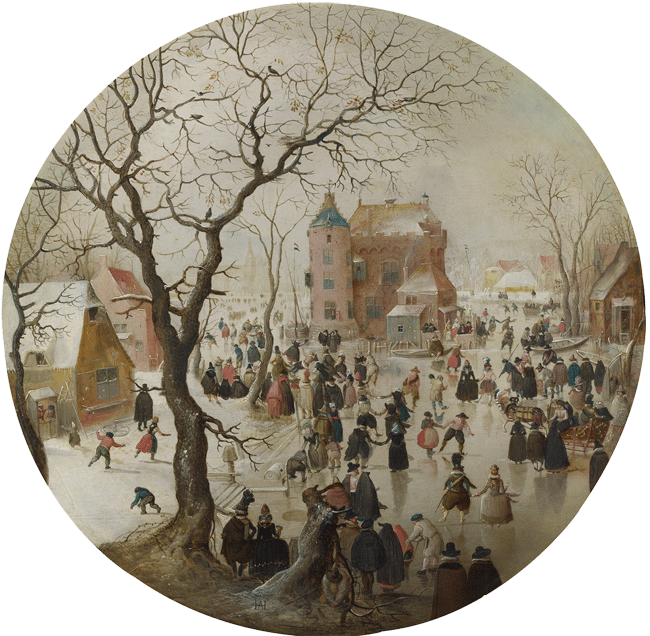
Read More: http://www.nga.gov/exhibitions/2010/avercamp/slideshow/ ---Winter landscapes evolved as an independent subject from pictorial cycles of the months or seasons, a popular theme in 16th-century Flemish art. The round format, the castle, and the festive skaters all reflect the work of Flemish artists who had moved to Amsterdam in the late 1500s.---
Yet, Evelyn points out, this midwinter celebration skated over the chilling facts: the poor were perishing from cold and hunger, the next year’s harvest was dead in the ground, and trees were dying. It was a catastrophe. Somehow, the Thames “frost fairs” turned it all into a joyous Bruegelian celebration of life.
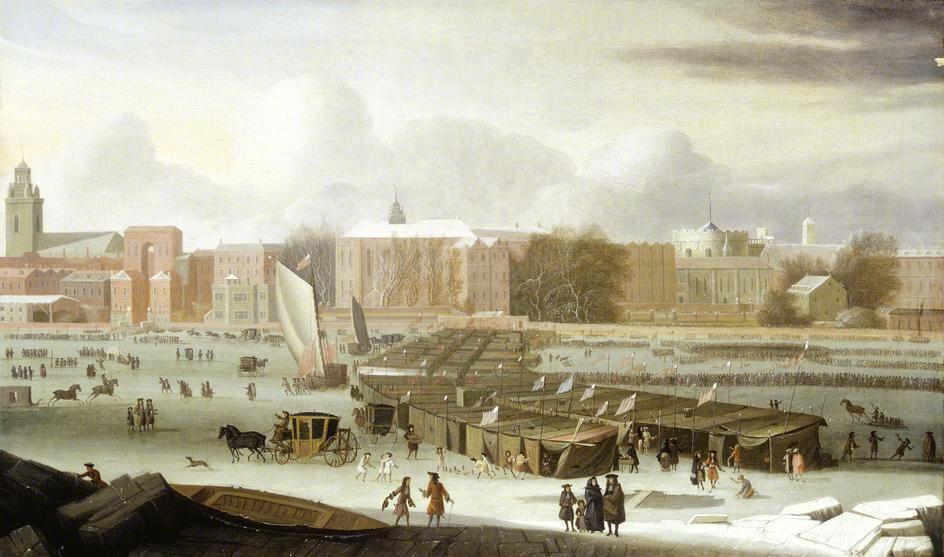
s/yourpaintings/paintings/a-frost-fair-on-the-thames-at-temple-stairs-london-50550 ---A Frost Fair on the Thames at Temple Stairs, London by Abraham Hondius Date painted: 1684 Oil on canvas, 66.9 x 111.9 cm Collection: Museum of London
The last frost fair on the Thames was in 1814, when Regency fops were just as keen to get on the ice to flirt, as a cartoon by Thomas Rowlandson, of skaters on the Serpentine, shows. But in the 19th century, the communal hilarity Bruegel bequeathed gives way to a terrible solitude. Snow is no longer made homely by winter sports and braziers. It becomes the white shroud of death. Caspar David Friedrich’s painting The Watzmann imagines a snowbound Alp, seen acro
reen foothills, as a smooth, inhuman spectre remote from the fleshy concerns of the everyday. It is extreme, it is desired, and it will kill you. The Alps in Friedrich’s day were still a menace to the economic and political life of Europe. Read More:http://www.guardian.co.uk/artanddesign/2006/dec/18/art.climatechange a

Read More: http://www.flanderstoday.eu/content/welcome-bruegelland ---Bruegel’s imagery was further transformed in the 17th century by painters such as Adriaen Brouwer, Joos Van Craesbeeck and David Teniers the Younger. They emphasised the lower class settings, adopting a patronising tone rather than expressing fellow feelings. Bruegel’s moral message was left behind. “By the time Teniers, Brouwer and Craesbeeck make their paintings, the connoisseurs and art lovers want to buy them because of the bad behaviour depicted in the scenes,” says Van Hout. “The distance between their own bourgeois lifestyles and the genre images of the paintings becomes greater and enhances their feelings of superiority.”---
—————————–
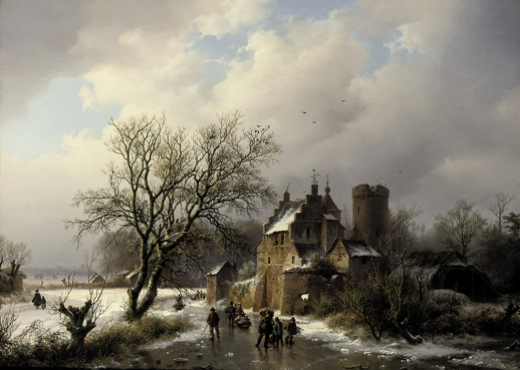
Read More:http://musingsfrommarsh.blogspot.com/2011/11/paint-words-of-winter.html ---("Skating To Nirvana"; Barend Cornelius Koekkoek) Winter came down to our home one night Quietly pirouetting in on silvery-toed slippers of snow, And we, we were children once again. ~ Bill Morgan, Jr. "The snow doesn't give a soft white damn whom it touches." ~ E. E. Cummings








 COMMENTS
COMMENTS



